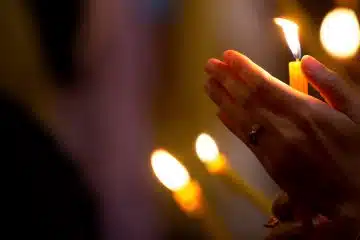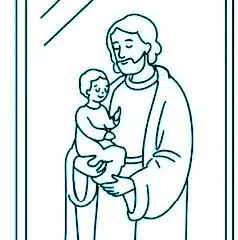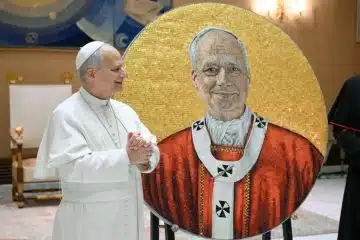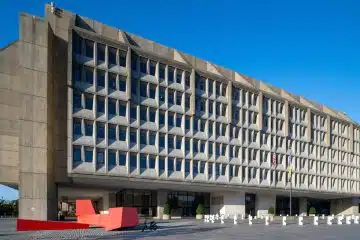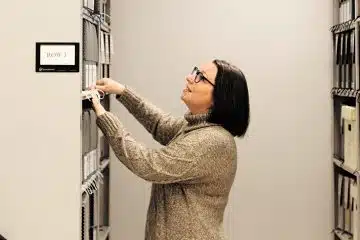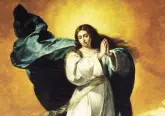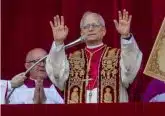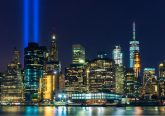5 facts to know about the Basilica of the National Shrine of the Immaculate Conception
Washington D.C., Dec 8, 2021 / 10:37 am
The Basilica of the National Shrine of the Immaculate Conception is the largest Roman Catholic Church in the United States. Located in Washington D.C., the Minor basilica is one of the ten largest churches in the world. Here are 5 facts you should know about this incredible Catholic landmark.
Over 100 years in the making
The Basilica, which began construction in 1920, was not actually completed according to its original architectural and iconographic plans until 2017.
The construction, which began with a ceremonial blessing of the land in May 1920 and concluded with the dedication of the Trinity Dome four years ago, had to be halted in the 1930s due to the Great Depression, the years and events surrounding World War II, and the death of Bishop Thomas Shahan, who was overseeing the process. It took over 20 years to begin construction again, which resumed with the building of the Upper Church and superstructure of the shrine in 1953 and 1954. Those two structures were finished in 1959, while the Knights of Columbus financed the 329-foot bell tower, “The Knights Tower,” which was completed in 1963.
Finally in 2017, a huge mosaic in one of the basilica’s domes, rendered the “Trinity Dome,” was dedicated, featuring the Most Holy Trinity, the Blessed Virgin Mary under her title of the Immaculate Conception, a procession of saints, and the four evangelists, encircled by the Nicene Creed.
Saints and the Shrine
St. Mother Teresa of Calcutta and St. Pope John Paul II both visited the shrine on more than one occasion. In addition, the construction plans for the church were approved by another Saint, then Pope Pius X.
In 1913 Saint Pope Pius X approved the plans for building the shrine in honor of the Our Lady of the Immaculate Conception. He also made a donation to help the project get off the ground. St. Pope John Paul II was the first Pope to ever visit the shrine and he did so the first time in 1979. In his first two visits, he was still archbishop of Krakow, Cardinal Karol Wojtyla. In 1979, as Pope John Paul II, he was welcomed to the shrine by cheers and crowds of people.
During his final visit to the shrine, the saint said that the shrine “speaks to us with the voice of all America, with the voice of all the sons and daughters of America, who have come here from various countries of the Old World.”
“When they came, they brought with them in their hearts the same love of the Mother of God that was characteristic of their ancestors and of themselves in their native lands,” he said. “These people speaking different languages, coming from different backgrounds of history and traditions in their own countries, came together around the heart of a mother they all had in common.”
St. Mother Teresa of Calcutta made her first visit to the shrine in 1972, the first of many visits she would make before her death in 1997. There is a large statue of the saint in the Hall of American saints in the Crypt level of the church. She is also one of the saints depicted in the new Trinity Dome in the Upper Church. Saint Mother Teresa has spoken at the pulpit at the shrine and many of the saints’ Missionaries of Charity have made their vows at the shrine.
Over 80 Marian chapels and oratories
The shrine houses more than 80 Marian chapels and oratories which represent different cultures and peoples all over the world.
Some of the nationalities and ethnicities represented in the shrine include: African, Austrian, Chinese, Cuban, Czech, Filipino, French, German, Guamanian, Hungarian, Indian, Irish, Italian, Korean, Latin American, Lebanese, Lithuanian, Maltese, Polish, Slovak, Slovenian, and Vietnamese.
Many religious communities are also represented including: Augustinians, Carmelites, Claretians, Dominicans, Franciscans, Jesuits, Montfort Missionaries, Oblates of Mary Immaculate, Redemptorists, Salesians, Sisters of Charity, Sisters of Providence, and Vincentians.
Five Landmarks that could fit in the basilica
With an interior length of 399 feet, the basilica is longer than many well known landmarks. Here are five that the basilica surpasses in length.
- The White House, being 168 feet long, is shorter in length than the basilic’s interior.
- The 185 foot tall Leaning Tower of Pisa in Italy lying on its side would still be shorter than the length of the church.
- The 305 foot Statue of Liberty in New York would not surpass the length of the church even if on its side.
- The USS Constitution, the oldest commissioned warship afloat in the world today, would also be shorter at 204 feet in length.
- The Lincoln Memorial, with a total building width from north to south being 201 feet and 10 inches, would also be shorter than the basilica’s interior.
Sheen: Shrine a force against Communism
Venerable Fulton Sheen studied at the Catholic University of America), the home of the Shrine, and then became a professor teaching theology and philosophy. A dynamic speaker, Sheen’s words were often captured in the university’s student newspaper, the Tower.
An article from The Tower in 1953 recorded then Bishop Sheen as campaigning for the refunding of the Shrine in his capacity as a Bishop, after the more than 20 year halt.
To a television audience who would view later and a live audience of over 1,400 people in the basilica’s Crypt church, Sheen asked the people “to manifest love for God through honoring His mother by completing the Shrine of the Immaculate Conception,” the Tower reported.
Sheen pleaded with the audience to donate because “this National Shrine belongs to all Americans and everyone is interested in preserving the spiritual and moral foundation of the country,” the student paper reported.
In order to preserve the foundation, Sheen said, “one must go to God through His mother, to whom the United States is dedicated under the title of the ‘Immaculate Conception,”’ the Tower wrote.
Sheen said another reason to fundraise for the Shrine was to gain strength in order to “resist the forces of communism which can be overcome even as the serpent’s head was crushed by Mary Immaculate,” the Tower reported.



